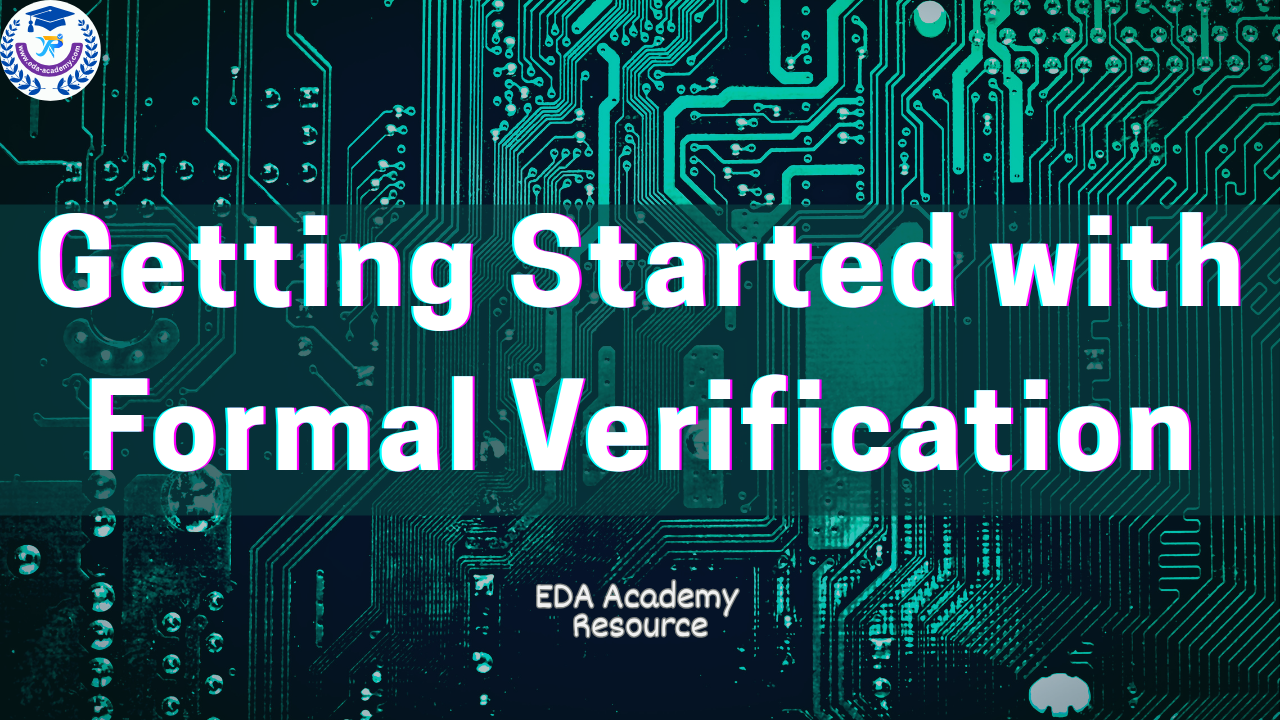Resource:
Getting Started with Formal Verification (English)
Formal verification uses mathematical reasoning to exhaustively analyze all possible states of a hardware design. It relies on well-defined properties, assertions, and environmental assumptions to ensure the design behaves correctly under all valid conditions. This technique builds a formal model of the system, checks key behaviors against specifications, and identifies unreachable states or violations. Key topics include formal model construction, assertion principles, proof engine performance, debug analysis, cone of influence, and tool setup. Formal verification provides strong guarantees of correctness and complements simulation by uncovering deep, rare bugs across the full state space.
Purchase
Our course syllabus is regularly updated to reflect the latest advancements and best practices in the field. For individually purchased courses or resources with lifetime access, students can always access the content and receive updates for free. For members, all member-free courses and resources — including future updates — are accessible during the active subscription period. This ensures that both lifetime purchasers and active members can benefit from the most relevant and up-to-date content.
Created by EDA Academy
English
Last updated July 2025

Resource: Getting Started with Formal Verification (English)
USD $199.9
-65%Today
$69.9
One-time Purchase
& Lifetime Access
What you will get:
1.3 Hours of Immersive, High-Quality Video Lessons
Professionally produced and delivered by our expert team, covering core concepts and practical demonstrations, with step-by-step explanations and real-life examples to help you efficiently absorb knowledge and apply it immediately in a short time.
Certificate of completion
Upon successful completion of the course, you will receive an official certificate issued by EDA Academy, adding value to your resume and career development.
Access on mobile and computer
The course can be viewed anytime on mobile phones, tablets, and computers, allowing you to learn easily whether at the office, at home, or on the go.
Ongoing support from EDA Academy
After the course ends, you will continue to receive ongoing support from our team to help you consolidate knowledge and solve practical problems.
Further learning plan
Provides you with follow-up learning paths and recommended resources, enabling you to continue improving your skills and expanding your career development based on what you have learned.
Resource Catalogue
Description
Formal verification applies logic-based techniques to verify that a hardware design meets its specification across all possible input combinations and states. It uses a property-centric approach, driven by assertions and assumptions that define expected design behavior and environmental constraints. Assertions capture critical safety and liveness conditions that must always or eventually hold. Assumptions constrain the state space to valid input scenarios, preventing unrealistic or undefined states from entering analysis. A complete and well-structured formal model ensures rigorous, automated analysis of functional correctness.
A central technical aspect of formal verification is the exploration of the design’s state space. This space grows exponentially with design complexity, making performance a key concern. Formal tools rely on symbolic reasoning to navigate this space efficiently. Concepts like the Cone of Influence help reduce proof complexity by focusing the engine on relevant logic elements only. Additional techniques such as design abstraction, property decomposition, and compositional reasoning help improve convergence and reduce proof runtime. Proper formal setup requires a balance between model expressiveness and tool capacity to prevent resource exhaustion.
Formal analysis involves interpreting results returned by the engine, which typically include proof success, counterexamples, or inconclusive outcomes. Debugging in the formal environment requires interpreting waveforms and symbolic traces to determine the root cause of assertion violations or model incompleteness. This requires clear property definitions, a well-isolated analysis scope, and precise environment modeling. The feedback from failed proofs or incomplete coverage can be used to refine the model, improve assumptions, or simplify complex assertions into smaller units that can be proven independently.
Tool configuration and formal engine selection play a crucial role in verification effectiveness. Parameters such as proof depth, search strategy, abstraction mode, and timeout settings influence the outcome significantly. Choosing appropriate engines based on design structure and property characteristics can dramatically improve throughput. Flexible access to multiple engines also allows for parallel exploration of different parts of the design or property set, enhancing overall verification speed. Automation scripts and templates can help standardize setup and reduce manual configuration effort.
Formal verification complements simulation by covering different aspects of design behavior. While simulation provides dynamic exploration based on test stimuli, formal verification guarantees correctness across all legal conditions, including rare or unreachable states in simulation. It provides clear return on investment in areas like control logic, arbitration, protocol compliance, and safety verification. Used strategically, formal techniques reduce bug escape rates and accelerate design closure. Key topics such as ROI analysis, appropriate use cases, and integration with simulation-based flows are critical to developing scalable, hybrid verification methodologies.
We HATE spam. Your email address is 100% secure
The document will be emailed to you. Please check your Spam folder if it doesn’t appear in your inbox.
We HATE spam. Your email address is 100% secure
